Archives
- 2025-12
- 2025-11
- 2025-10
- 2025-09
- 2025-03
- 2025-02
- 2025-01
- 2024-12
- 2024-11
- 2024-10
- 2024-09
- 2024-08
- 2024-07
- 2024-06
- 2024-05
- 2024-04
- 2024-03
- 2024-02
- 2024-01
- 2023-12
- 2023-11
- 2023-10
- 2023-09
- 2023-08
- 2023-06
- 2023-05
- 2023-04
- 2023-03
- 2023-02
- 2023-01
- 2022-12
- 2022-11
- 2022-10
- 2022-09
- 2022-08
- 2022-07
- 2022-06
- 2022-05
- 2022-04
- 2022-03
- 2022-02
- 2022-01
- 2021-12
- 2021-11
- 2021-10
- 2021-09
- 2021-08
- 2021-07
- 2021-06
- 2021-05
- 2021-04
- 2021-03
- 2021-02
- 2021-01
- 2020-12
- 2020-11
- 2020-10
- 2020-09
- 2020-08
- 2020-07
- 2020-06
- 2020-05
- 2020-04
- 2020-03
- 2020-02
- 2020-01
- 2019-12
- 2019-11
- 2019-10
- 2019-09
- 2019-08
- 2019-07
- 2019-06
- 2019-05
- 2019-04
- 2018-11
- 2018-10
- 2018-07
-
br Introduction Coping with DNA damage is
2020-12-16
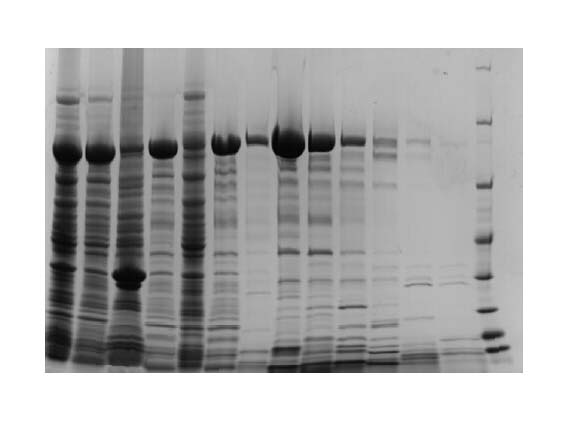
Introduction Coping with DNA damage is possible thanks to surveillance mechanisms (checkpoints), that detect the problem and promote its solution [1], [2], and to repair and tolerance pathways that remove the lesions or reduce the damage consequences [3], [4]. Failures in these processes have a h
-
br Materials and methods br Results br Discussion In general
2020-12-16
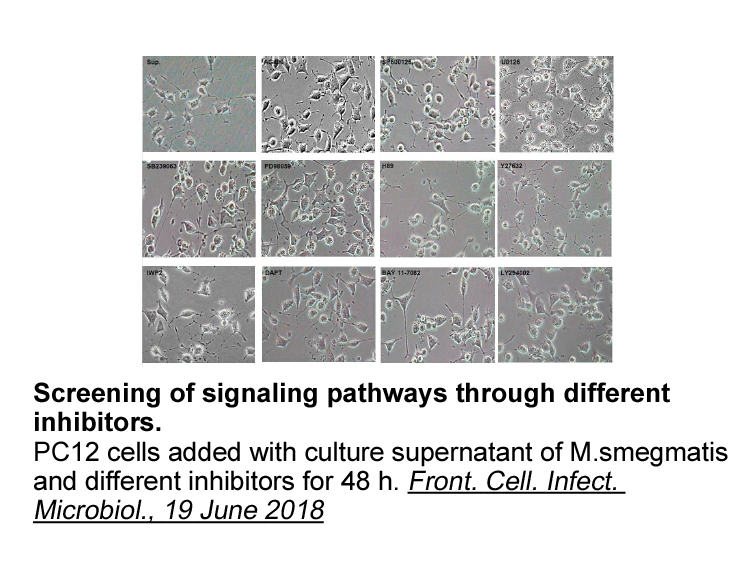
Materials and methods Results Discussion In general, CI symptoms are often visible only after the chilled products have been removed from coolstore to a warmer temperature (Schirra and Cohen, 1999). However, in the present work, 'satsuma’ mandarin fruit stored at 2°C showed chilling symptom
-
br Limitations There are some limitations
2020-12-16
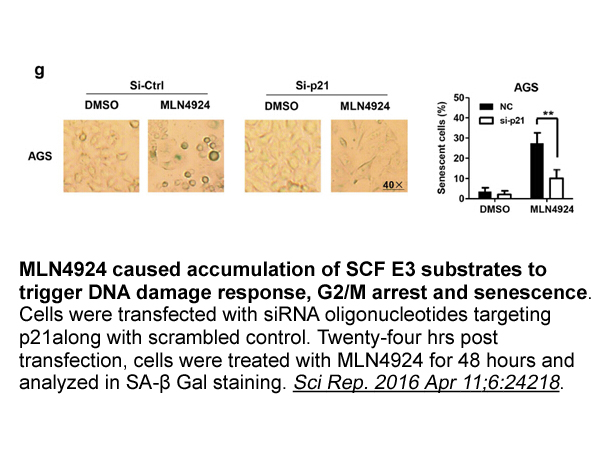
Limitations There are some limitations to take into account when interpreting these results. Firstly, direct causation cannot be established in this cross-sectional study, and it may be the downstream effects of TNFα, such as increased NCT-502 production, which are more proximally related to cog
-
Recent pharmaceutical research in the
2020-12-16
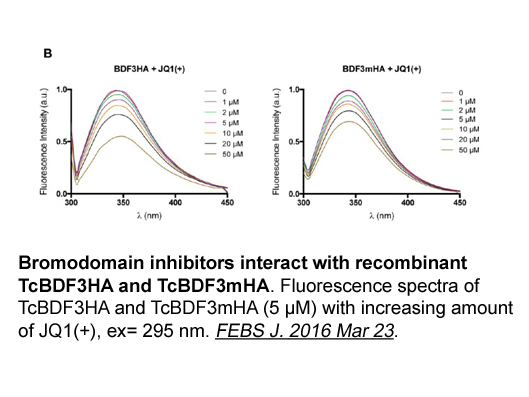
Recent pharmaceutical research in the field of respiratory diseases has sought to make available new agents that specifically and selectively antagonize the actions of cysteinyl–leukotrienes. Such an effort has resulted in the development of two classes of drugs, effective in counteracting Cys-LTs p
-
During the course of our research on mGlu PAMs the
2020-12-16
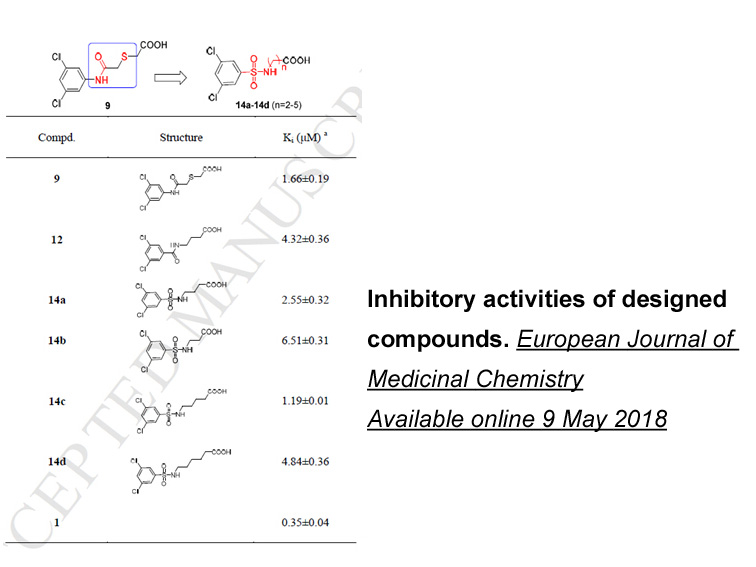
During the course of our research on mGlu PAMs,, the hydroxyacetophenone scaffold was found to possess dual mGlu PAM and CysLT1 antagonism activity, presumably as orthosteric antagonist (). There is currently an increasing interest in drug discovery to explore multitarget drugs or polypharmacology
-
br Materials and methods br Results The
2020-12-16
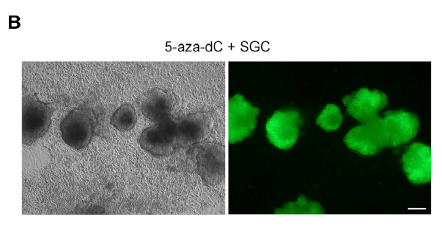
Materials and methods Results The monoclonal antibody (mAb), 12G5, reacts specifically with the human fusin protein and recognizes the protein on many T-cell lines such as the SUP-T1 dna synthesis (Endres et al., 1996). As shown in Fig. 1, AMD3100 at 25 μg/ml completely inhibited the binding
-
Physiological changes induced by CRF are mediated
2020-12-16
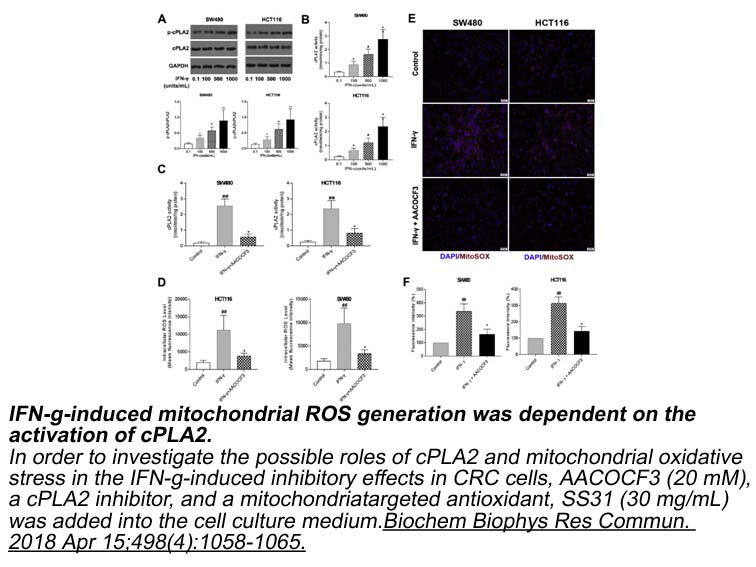
Physiological changes induced by CRF are mediated through CRF1 and CRF2 receptors (Chang et al., 1993, Lovenberg et al., 1995). Previous findings with CRF1 receptor antagonists showed that activation of CRF1 receptor is involved in maternal separation-induced ultrasonic vocalizations (Kehne et al.,
-
br Transparency document br Results and Discussion br
2020-12-15
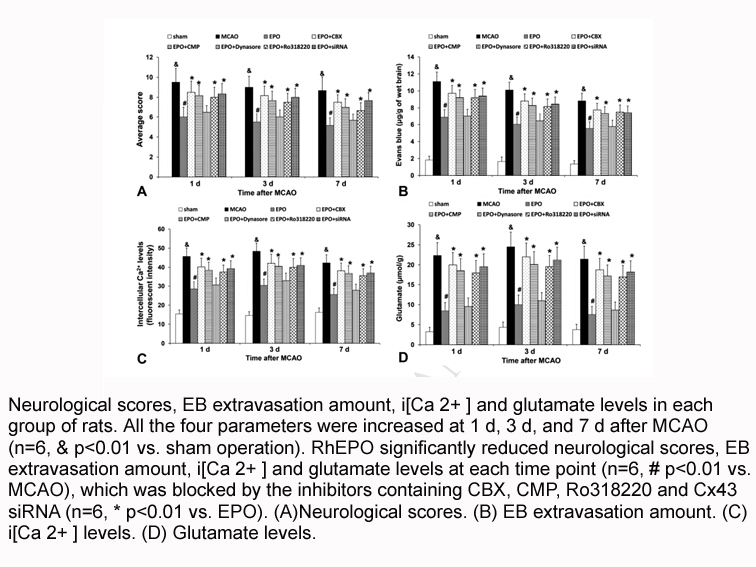
Transparency document Results and Discussion Experimental Procedures Acknowledgments The casein kinase 1 (CK1) family consists of at least seven different gene products, often referred to as isoforms (α, β, γ1, γ2, γ3, δ, ε, with splice forms described for CK1α, γ, and ε (reviewed in )
-
Many studies have shown that curcumin delays the progression
2020-12-15
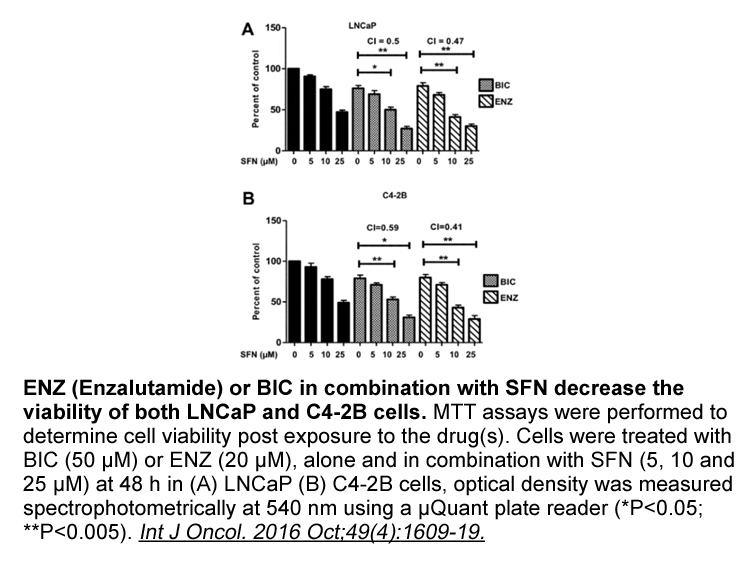
Many studies have shown that curcumin delays the progression of atherosclerosis in different atherosclerotic animal models [18], [19], [20], [37] and the risk of atherosclerosis in human studies [15], [38], [39]. Curcumin also has many properties that contribute to combat atherosclerosis, such as an
-
The major concern of PDE
2020-12-15
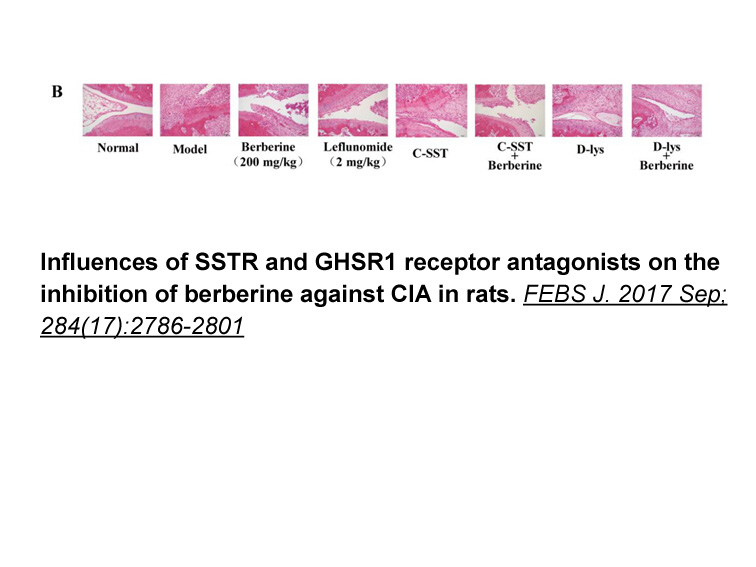
The major concern of PDE-5-I use in liver cirrhosis is the potentially harmful effect on systemic blood pressure. Data of clinical studies are conflicting [27], [30], [31], [32], but available patient details suggest that in advanced liver cirrhosis, PDE-5-Is lower systemic blood pressure to a great
-
Finally naringin and hesperidin have different glycosidic
2020-12-15
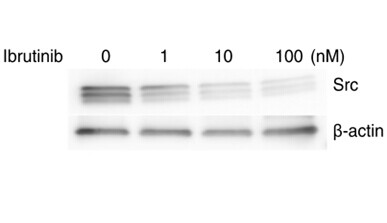
Finally, naringin and hesperidin have different glycosidic moieties (neohesperidose α-1,2 and rutinose α-1,6 respectively), bound in the same C7 position on the A ring of the flavonoid. The higher value of k/KM of RHA-Phis towards the former substrate suggests that the enzyme shows a preferential hy
-
Artificial permutations have also been exploited by
2020-12-15
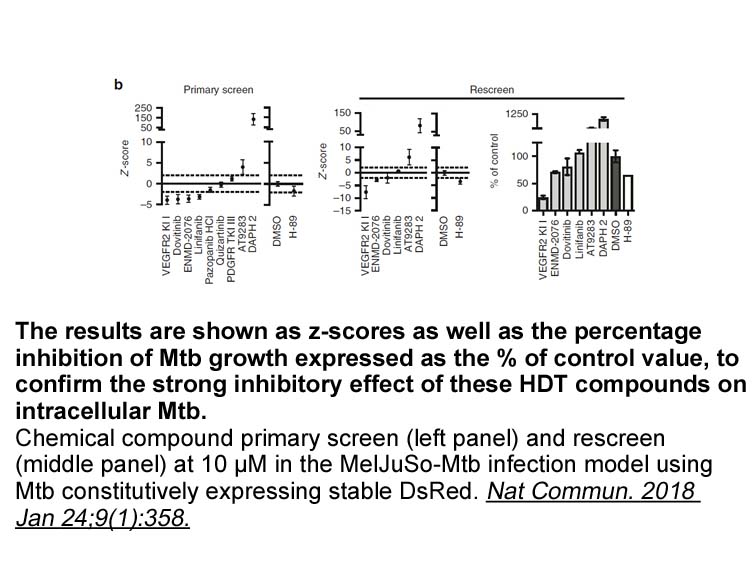
Artificial permutations have also been exploited by protein engineering to manipulate protein scaffolds, in order to improve catalytic activity, alter substrate or ligand binding affinity, reduce proteolytic susceptibility, increase stability, generate different aggregation states and improve fluore
-
Covalent inhibitors are well suited for
2020-12-15
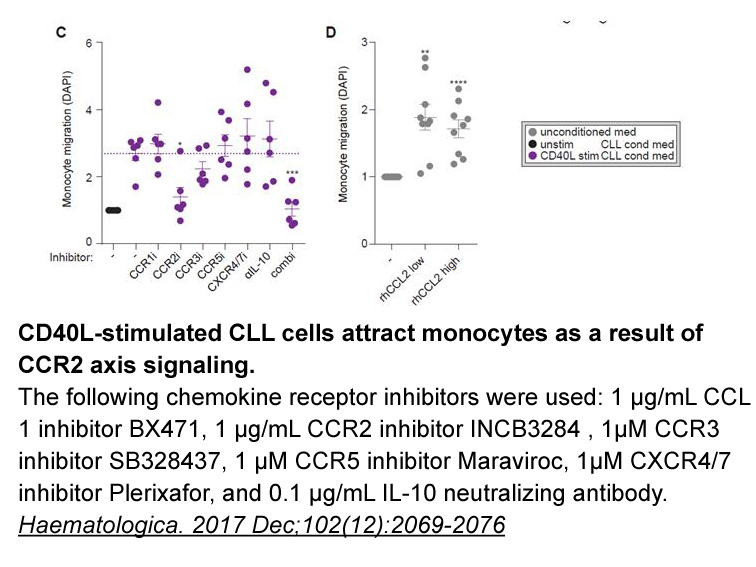
Covalent inhibitors are well suited for targeting the E1 amyloid definition of Ubl modifications. Because the E1 enzymes in Ubl modifications, such as the SUMO E1 and Atg7, have a slow turnover rate (Boggio et al., 2004), prolonged inhibition can be achieved without requiring compounds to be stable
-
Upon Edn ligand binding endothelin receptors can induce a
2020-12-15
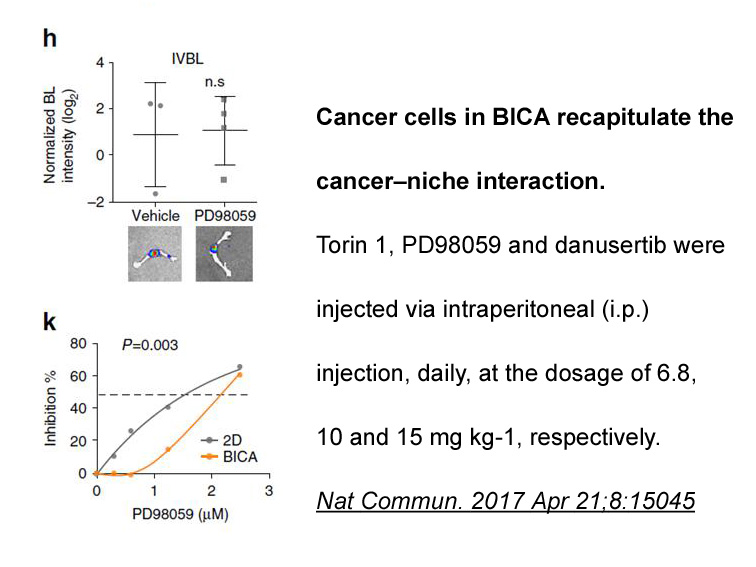
Upon Edn ligand binding, endothelin receptors can induce a variety of intracellular signaling cascades leading to diverse cellular responses such as contraction in the case of smooth muscle cells, or cell growth and mitogenesis. Ednrs are expressed in a variety of cell types and tissues, for example
-
WNV a member of the genus Flavivirus within
2020-12-15
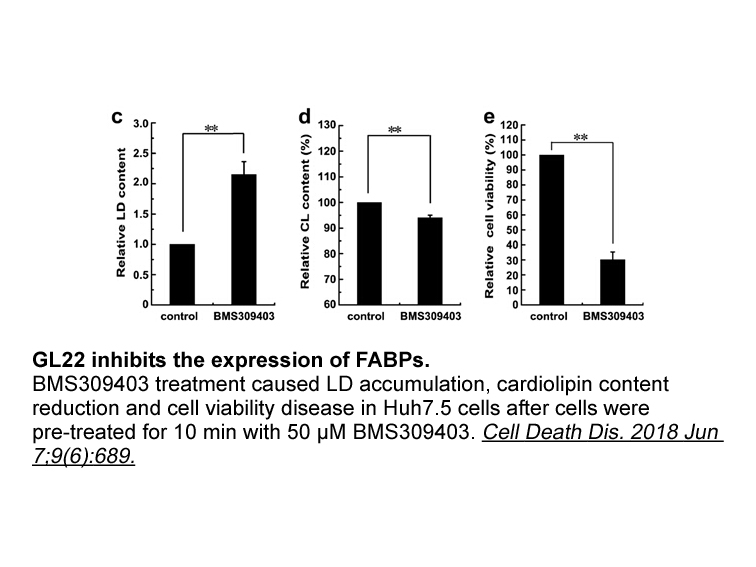
WNV, a member of the genus Flavivirus within the family Flaviviridae, was first isolated in 1937 from a febrile woman in the West Nile region of Uganda (Brinton, 2002). Until 1999, WNV was mainly confined to Southern Europe, the Middle East, Africa, West and Central Asia, Indonesia and Australia. In
15767 records 708/1052 page Previous Next First page 上5页 706707708709710 下5页 Last page